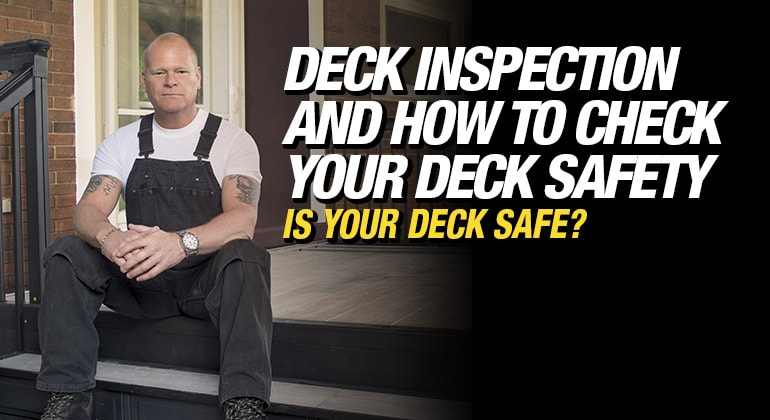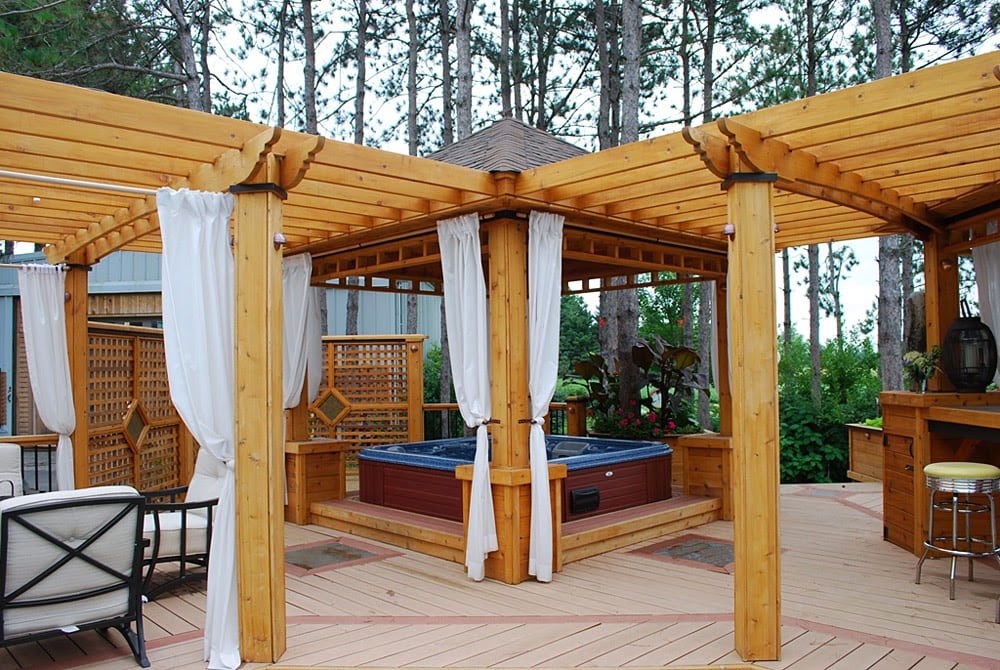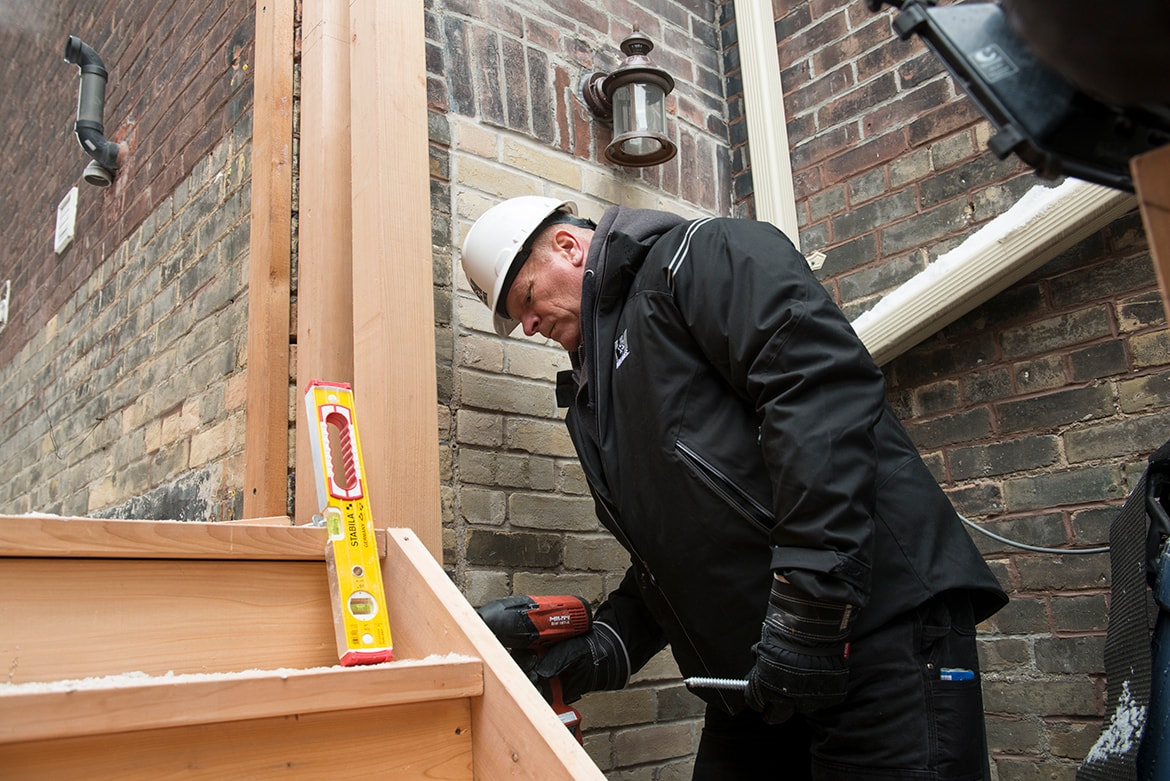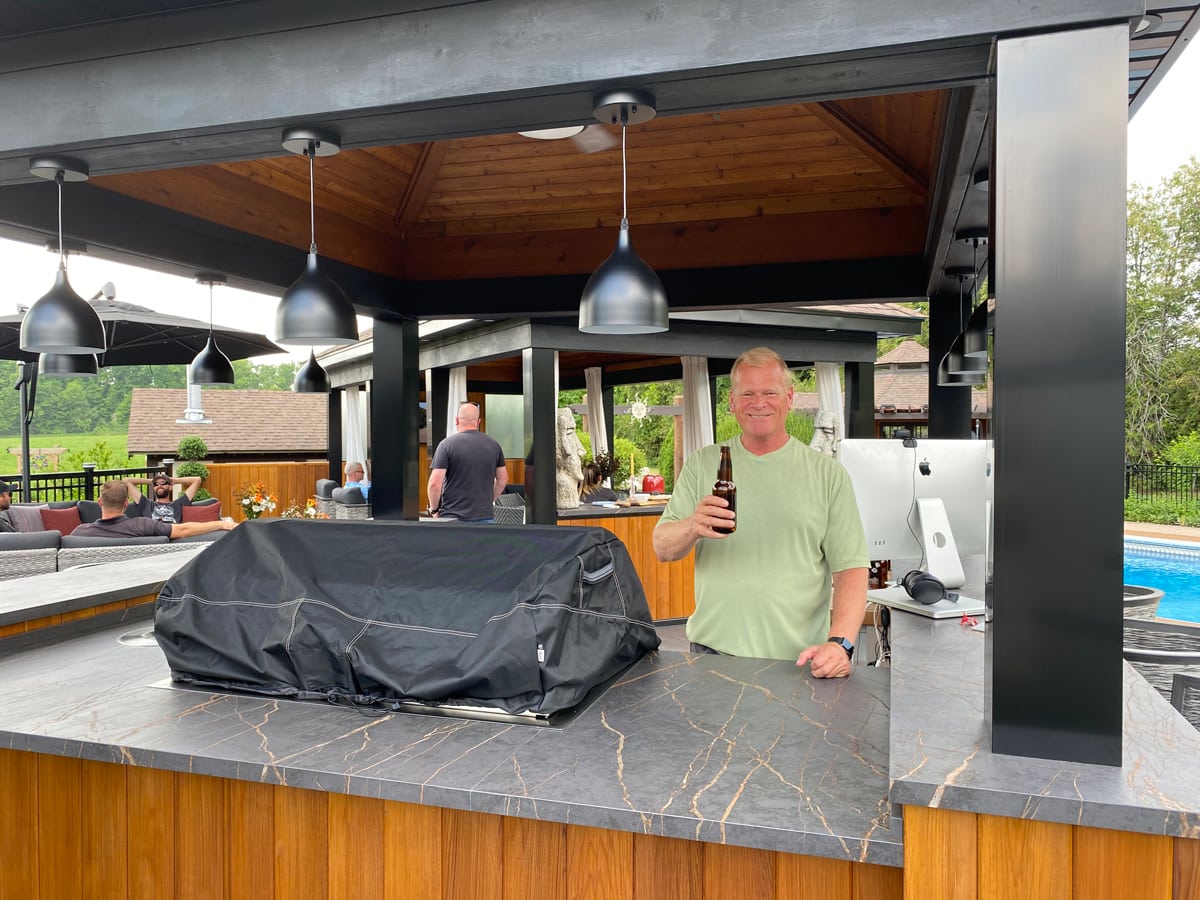Dream of a career where your skills bring joy, enable freedom, and create unforgettable memories? The thriving recreational vehicle (RV) industry offers just that! It’s more than fixing vehicles; it’s...

Deck Inspection and How to Check Your Deck Safety
By Mike Holmes
Mike’s Advice / Buying & Selling Your Home
Wednesday, January 19th, 2022 @ 9:02am
Is Your Deck Safe? How To Inspect A Deck
A deck attached to a house is a structural component. What does that mean? It means your deck handles “load”. Like any other outdoor structure, your deck is also exposed to the elements. So the question is, is your deck safe to use this season? I’m going to teach you how to inspect your deck yourself.
Your house’s structural components are protected from Mother Nature and designed to keep water, pests, and sunlight out of your house. Your deck’s structural components are exposed to the weather. Over time it may become compromised. That’s why it is so important to make sure your deck is safe to use, and that starts with a deck inspection.
What Causes Decks To Collapse?
People often think that just because they can have 50 people in their house at one time, they can have 50 people on their decks as well. I’ve heard many horror stories of deck collapses. According to the International Association of Certified Home Inspectors (InterNACHI), around 90% of deck collapses are a result of the separation of the house and the deck ledger board.
Some other causes of deck collapses are:
- Ledger board issues
- Rotting deck boards
- Rotting deck posts and beams
- Decks not built to code and without proper permits
Therefore I don’t recommend building a deck on your own.
HOW To Inspect Your Deck and What to Look For
Your deck faces harsh weather all year long. Being exposed to extreme heat and cold can take a toll on even the most well-maintained decks. You can bring in a qualified home inspector if you have concerns about your deck. As a homeowner, there are also some signs of damage you can look out for:
- Ledger Board issues (Deck is improperly attached to the house)
- Visible rot
- Visible Cracks
- Insect Damage
- Rust on fasteners and connectors
- Loose Stairs Railing
- Rotten deck posts
- Wobbly deck
Is Your Deck Safely Attached to The House?
Your Ledger Board
The problem area for most decks is where the ledger board is attached to the house wall. You don’t want any water getting in behind the ledger board and entering your home.
You need to make sure each bolt is caulked and sealed. And that the ledger board must be properly flashed to prevent water damage.
One of the common reasons for deck collapses is the failure of nail-only connections between the deck and the primary structure.
The deck ledger is the deck floor rim board attached to the house, and it should be positively connected to the floor structure of the main building with bolts or lag screws, not nails.
Missing Ledger Flashing
If you can, crawl under your deck and look at the ledger board. If you don’t see a metal or plastic lip over the top of the ledger board, you will need to add flashing.
Check For Lag Screws in Ledger Board
Your deck can fall off if the ledger isn’t fastened properly. This is a common issue with DIY decks.
Wobbly Deck
When you step on your deck, if you sense a lot of movement, that is not a good sign. Deck movement puts extra stress on the fasteners and connectors. Over time, the joists can pull away from the rim joist or ledger board and twist out of their vertical position. This makes them weak.
Insect Damage on A Deck
Check the wood for rot and insect infestation that would look like damage to the wood. This can be from termites, carpenter ants, and carpenter bees. The presence of termites is an omen of serious damage in your home. Termites eat wood for food.
When you step on your deck, do you feel any slight movements? If you do, I highly recommend bringing in a professional inspector to do a thorough deck inspection.
RELATED:
Rust On Fasteners and Connectors
Take a look under your deck to ensure that fasteners, connectors, and joists are all in good condition. That includes making sure that the nails, bolts, screws, and other metal connector pieces aren’t rusted or otherwise compromised. If you detect rust, bring in an inspector.
Check For Cracks On Your Deck Boards
It’s no surprise that after extended use, wood tends to crack. Don’t worry about tiny cracks that aren’t growing. However, if you see any cracks around the fasteners or between the joists, that’s an issue. It can make your deck structure weak. Small cracks aren’t anything to be alarmed about, as long as they don’t continue to grow.
RELATED
Check For Rot On Your Deck
Where wood meets wood (butted boards) or wood meets concrete are the most common places for hidden rot.
If you haven’t protected your deck in a long time or not at all, take something hard and pointy like a flathead screwdriver and poke around.
You want to catch water intrusion and wood rot before it weakens the deck and leads to a deck collapse.
Regularly sealing and staining your deck every 2-3 years is a good idea. It can help reduce cracking from water, cold, and heat exposure.
Rotting Deck Boards
If you notice cracks in your floorboards that keep growing, you need to replace your deck boards. It’s a safety hazard. If you have a noticeable portion of boards that are rotting, you’ll want to replace those for both safety and aesthetics.
How To Check For Rot
Do the “pick test” on deck posts to check for areas of decay or rot. If the wood slowly bends and doesn’t splinter much upon breaking, then you may have decaying wood that will need to be addressed.
Mike’s Tip: Remove debris from between your deck boards every season. Pay special attention to the areas where deck boards cross the joists.
Rotting Deck Posts
If your deck posts are resting directly on footings, they can absorb water. This leads to rot, especially if the deck support posts aren’t pressure treated. Why is this bad? Well, if your posts rot, they aren’t strong enough to support the weight of your deck.
Replacing a rotted post is the best solution.
Check The Rim Joists
Your outside board, called the rim joist, should be secured to the floor or the deck joists. Check to make sure the joist hangers and nails are secured.
RELATED
Wobbly Railing
It doesn’t matter if your deck has wood railing, metal railing, or cable and glass railing systems; a safe railing is important.
If your railing is loose, get it fixed right away. This is very dangerous. Do not allow anyone on your deck until you have fixed your wobbly railing.
Tighten Loose Bolts
If your wood deck railing feels wobbly when you push or pull against it, it’s likely a railing post to deck frame connection that’s loosened. Your deck posts should be fastened to the deck joists and beams with solid lag screws or bolts and surrounded with secure blocking.
Check each bolt and lag tightening with a power drill or ratchet to ensure each piece is fully driven. Do this to every post on your deck area that feels slightly movable. This will prevent any accidents later on in the season and prevent you from having to make a second round.
RELATED
Mould & Mildew On Your Deck
It’s not uncommon for decks to develop a bit of a green tint from mildew over time. Steps are the most susceptible to mildew growth, which can make them slippery and unsafe. Clean your deck regularly. It’s important for your deck’s safety.
RELATED
Should I Get a Deck Inspection?
Any deck over 10 years old be inspected by a building professional with knowledge of the current code. As building code evolves, new techniques and materials aimed at making sure decking projects are safe may need to be implemented.
I highly recommend a thorough deck inspection for decks that are above ground level. You need a professional to evaluate the existing deck’s ledger connection to the structure.
If I have no experience, can I build a deck?
I don’t recommend building a deck as a DIY project. A lot can go wrong if you don’t have the proper tools and experience. For example, even if the deck ledger is connected with bolts or lag screws, their correct installation to the house floor band joist is important to provide a strong connection for the deck.
Cleaning Your Deck
I recommend cleaning your deck every single year. You can use a deck cleaning product of your choice or simply soap and water. I don’t recommend using a pressure washer. It can be very harsh on your deck and can actually cause damage.
Should I Use a Pressure Washer On My Deck?
Pressure washing your deck is not always a great idea. In the wrong hands, this can be a dangerous tool for your deck. If you really want to use a pressure washer, use a wide fan. First, determine how close the wand should be to the surface by experimenting on an area that is relatively unnoticeable.
Follow the instructions to avoid damaging the wood.
I would recommend just using a soft bristle brush and a garden hose. If you see the wood fibres starting to rise (bur) back off slightly.
How To Build A Solid Deck Foundation
I can’t emphasize the importance of a good foundation enough when it comes to building a strong deck foundation. One method that I highly recommend is using helical piles.
These aren’t your average screws. These helical piles are screwed into the earth by certified experts using specialized machinery until they reach the desired depth and torque, creating a solid, sturdy foundation that is capable of supporting your deck.

Helical Piles are great for increasing the stability and security of your home or other structures like your deck for many years to come.
What I love about them is that they are adaptable. Whether you have sandy, rocky, or clay soil, these helical piles are versatile and offer the sturdiness your deck requires.
One of the most important features of these helical piles is their durability. They are made of strong steel and are designed to endure even the harshest weather conditions. They are less prone to shifting or moving since they are buried deep down. That means you can be confident that your deck, as well as your house or other buildings, will be solid and safe for many years to come.
READ NEXT
Deck Restoration and Deck Refinishing Tips
Building A Garden Shed? Read this first











